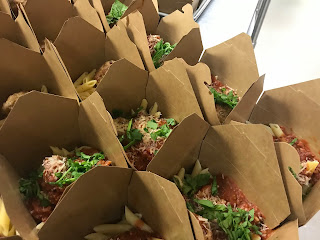Communications
 |
| WSDA received a report of seeds mailed from China that the recipient did not order. |
We have also received reports of people who purchased seeds from an online retailer thinking the seeds were from the United States, only to learn when the package arrived in the mail (also usually listing something other than seeds on the mailing labels) that the seeds were from another country.
Avoiding plant import regulations and bypassing customs (for example, by mislabeling a package and identifying its contents as something else) to get plant material into the United States is known as agricultural smuggling and is not only illegal, but poses a serious threat to our farms, gardens, animals, and environment.
- They could be invasive. Some plants are not allowed to enter the country because they are known to be invasive, and could outcompete native plants.
- They could harbor pests and diseases. Plants and seeds can have insect or disease pests that could devastate native plants that have no defense against them. This could lead to the loss of plants or require increased pesticide use to manage.
- They could harm livestock. Some plants are toxic to livestock and other animals – even humans. If they are planted, they could be harmful to livestock and other animals.
For these reasons, bringing plant material into the United States is closely regulated by the United States Department of Agriculture (USDA).
What Washington residents should do
USDA is asking residents to place these seeds and their packaging in a plastic bag. Place the bag in a mailing envelope and send to USDA for further investigation. Washington residents can submit seeds they suspect have entered the country illegally to USDA at the following address:
USDA-APHIS-PPQ – Attn: Jason Allen
Seattle Plant Inspection Station
835 South 192nd Street, Bldg D, Ste 1600
Seatac, WA 98148.
Those who have planted the seeds should leave the plants where they are and contact the APHIS State Plant Health Director for guidance.
WSDA had previously instructed residents to double bag and dispose of the seeds and plants grown from them in the trash before receiving this updated guidance. Residents who disposed of seeds do not need to take any further action.
Questions about submitting seeds should be sent to the APHIS State Plant Health Director.
What about burning the seeds?
Burning seeds is not a guaranteed way to kill the seeds. Some seeds actually require fire and smoke to germinate, so burning an unknown seed could actually improve its ability to grow. If fire is not needed to help a seed germinate, then with enough time, fire could make the seed unviable. However, the average person may not be able to generate enough heat for long enough to kill the seed without a substantial risk to catching other things on fire.
What about grinding up the seeds?
We suggest that you do not open the seed packets at all. Opening and putting the seeds through a blender, for example, could release fungal or other plant diseases.
What residents in other states should do
Anyone outside of Washington State who receives an unsolicited package of seeds from China or other countries should contact their state plant regulatory official or APHIS State plant health director. Please hold onto the seeds and packaging, including the mailing label, until someone from your state department of agriculture or APHIS contacts you with further instructions. Do not plant or consume seeds from unknown origins.
USDA’s Animal and Plant Health Inspection Service (APHIS) is aware that people across the country have received unsolicited packages of seed from China. APHIS is working closely with the Department of Homeland Security’s Customs and Border Protection and State departments of agriculture to prevent the unlawful entry of prohibited seeds and protect U.S. agriculture from invasive pests and noxious weeds.
In addition to the work that USDA APHIS is doing, WSDA’s Plant Protection staff are also working with online retailers to prevent this from happening in the future.
Thank you to everyone who has reported this issue and thank you for protecting Washington’s farms, gardens, and environment from potentially harmful plants and pests.
7/27/2020 - This blog was updated to add the sections on burning and grinding seeds.
7/29/2020 - This blog was updated to reflect new instructions from USDA for residents on what to do with the seeds.





